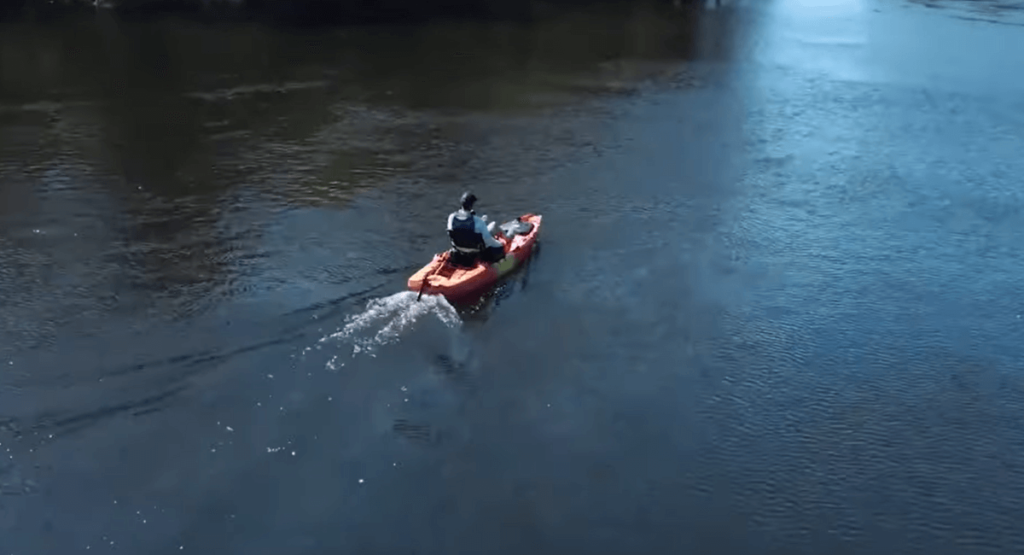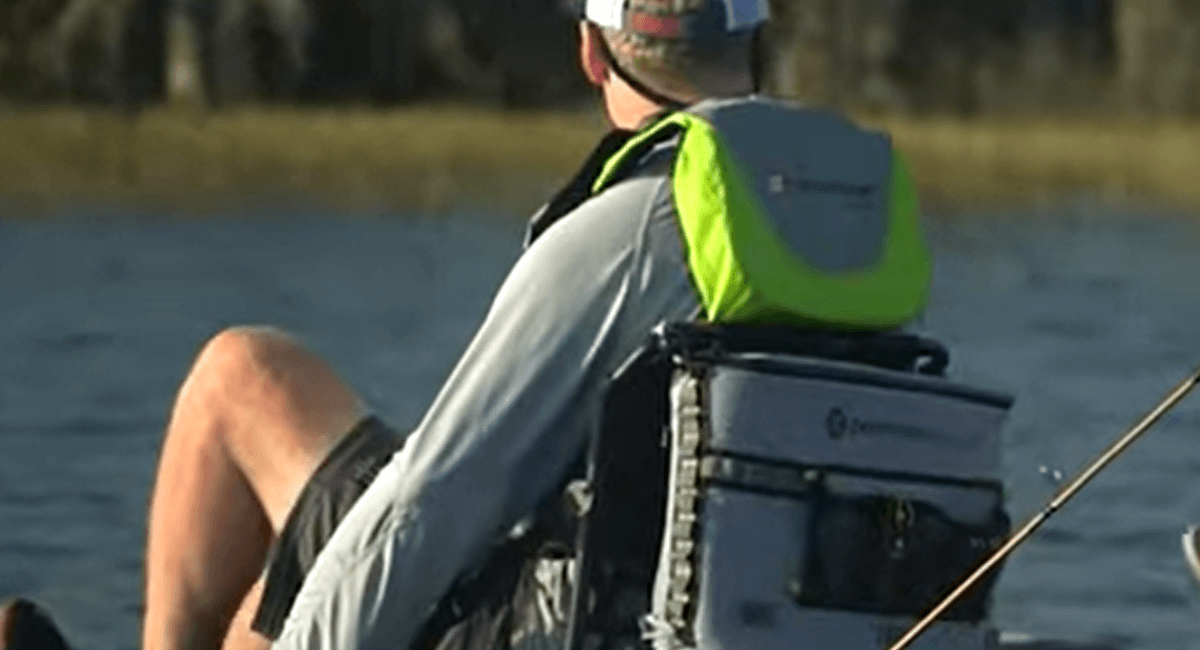Pedal kayaks offer hands-free paddling, enabling easier movement and fishing, but they can be heavier and more expensive than traditional kayaks. When it comes to choosing a kayak for water activities, pedal kayaks stand out with their convenient propulsion system, making them an attractive option for many adventurers.
The innovative design allows for hands-free paddling, providing a more relaxed and enjoyable experience for fishing and exploring waterways. However, it’s essential to consider the potential downsides, such as their weight and cost, before making a purchase decision. We will delve into the pros and cons of pedal kayaks to help you make an informed choice for your next aquatic adventure.
Pros Of Pedal Kayaks
Discover the advantages that pedal kayaks bring to your water adventures.
Efficient Propulsion
- Pedal kayaks offer efficient movement through water.
- Allows you to cover more distance with less effort.
- Maneuver swiftly through various water conditions.
Hands-free Operation
- Enjoy the ease of hands-free operation with pedal kayaks.
- Experience the freedom to fish, take photos, or enjoy a snack while kayaking.
- No need to constantly paddle, allowing for more relaxation.
Better Maneuverability
- Achieve greater control and precision with pedal-operated steering.
- Easily navigate through narrow passages and tight spaces.
- Increase your kayaking skills with enhanced maneuverability.
Cons Of Pedal Kayaks
Pedal kayaks offer a unique and efficient way to navigate the water, but there are some drawbacks to consider before investing in one.
Initial Cost
The initial cost of purchasing a pedal kayak can be higher compared to traditional kayaks. The added mechanical components and technology incorporated into pedal kayaks often result in a premium price tag, which may not be feasible for all individuals looking to engage in kayaking activities.
Limited Shallow Water Use
One of the limitations of pedal kayaks is their inability to navigate extremely shallow waters. The propulsion system and pedal drive make it challenging to operate in shallow areas where traditional kayaks can easily glide through. This reduces the flexibility and versatility of pedal kayaks, especially in environments with varying depths and water conditions.
Maintenance Challenges
Pedal kayaks require regular maintenance due to the intricate pedal drive system. Keeping the pedal drive functioning at an optimal level demands additional time and effort compared to traditional kayaks. Any mechanical issues or malfunctions with the pedal drive can pose maintenance challenges that may require professional expertise for resolution, potentially adding to the overall cost of owning a pedal kayak.
Comparison With Traditional Kayaks

Speed And Efficiency
Pedal kayaks offer enhanced speed and efficiency compared to traditional kayaks. Due to the pedaling mechanism, they allow for a more streamlined and continuous motion, overcoming the limitations of paddling. This results in faster travel and an increased ability to cover larger distances in a shorter amount of time.
Comfort And Convenience
When it comes to comfort and convenience, pedal kayaks excel in comparison to traditional kayaks. The ability to use your lower body for propulsion provides a more ergonomic and less strenuous paddling experience. Additionally, pedal kayaks typically come equipped with adjustable, comfortable seating options and ample storage space, providing enhanced comfort and convenience for extended outings.
Environmental Impact
Environmental Impact:
Noise Pollution
Pedal kayaks produce minimal noise pollution, respecting the tranquility of the natural environment.
Ecological Disruption
Minimal disruption occurs to the ecosystem with pedal kayaks, preserving the delicate balance of marine life.
Safety Considerations

Safety considerations are essential when using pedal kayaks. Pros include a hands-free operation for fishing or photography, but cons relate to the potential challenges of managing foot pedals in strong currents or emergencies. Proper training and equipment can mitigate risks and enhance the overall kayaking experience.
Stability Concerns
Pedal kayaks have gained immense popularity among water enthusiasts due to their unique propulsion system and ease of use. However, when it comes to safety considerations, stability concerns are one of the primary factors to be mindful of. Pedal kayaks are designed with a narrower hull compared to traditional kayaks, which can compromise their stability, particularly in choppy or rough waters. This inherent instability may make it challenging for beginners or those lacking experience to maintain balance and prevent accidental capsizing.
Emergency Situations
While pedal kayaks offer an enjoyable and efficient way to explore the waters, it’s important to consider the potential challenges that may arise in emergencies. Unlike traditional kayaks where you can paddle freely, pedal kayaks rely on a pedal-driven system which can limit your options in unforeseen circumstances. In emergencies such as strong currents, unexpected obstacles, or sudden weather changes, the pedal system may restrict your ability to react quickly and maneuver effectively. As a result, it’s crucial to be well-prepared and have a contingency plan in place when venturing out on a pedal kayak.
Ensuring Safety In Pedal Kayaks
To mitigate the stability concerns associated with pedal kayaks and ensure maximum safety, here are some essential precautions to keep in mind:
1. Wear a Personal Flotation Device (PFD): Always wear a properly fitted PFD when operating a pedal kayak, regardless of your swimming ability.
2. Choose Calm Waters: Opt for calm and sheltered water conditions to minimize the risk of capsizing or navigating through challenging currents.
3. Take it Slow: Start with leisurely and short trips to gradually build up your confidence and improve your balance skills.
4. Learn to Steer: Familiarize yourself with the steering mechanism of your pedal kayak before heading out on longer journeys. Practice steering and maneuvering to gain control in different situations.
5. Stay Informed: Regularly check weather forecasts and tides to avoid getting caught in unfavorable conditions.
6. Communication is Key: Inform someone trustworthy of your kayak trip details, including your planned itinerary and estimated return time.
7. Sharpen Your Skills: Consider taking a safety course or seeking guidance from experienced pedal kayak users to enhance your knowledge and skills in handling emergencies. Ultimately, while pedal kayaks offer a thrilling and innovative way to explore waterways, it’s important to be aware of the potential stability concerns and take necessary precautions to ensure a safe and enjoyable experience. By following these safety guidelines, you can confidently navigate your pedal kayak and fully embrace the adventure it has to offer.
Choosing The Right Pedal Kayak

When it comes to selecting the perfect pedal kayak, there are a few key factors to consider. From the types of pedal systems available to the features that suit your needs, making an informed decision will ensure that you have an enjoyable time out on the water. In this article, we will explore the pros and cons of pedal kayaks and provide you with valuable insights to help you choose the right one.
Types Of Pedal Systems
Before diving into the features, let’s take a look at the different types of pedal systems you can find in kayaks. Each system offers its unique advantages and disadvantages, so understanding the differences can help you make an educated decision.
| Pedal System | Description |
|---|---|
| Torque-Based Pedal Drive | Utilizes rotational force to propel the kayak forward, providing excellent speed and efficiency. |
| Fin-Based Pedal Drive | Features a fin-like design that mimics fish movement, offering superb maneuverability in shallow waters. |
| Paddlewheel Pedal Drive | Utilizes a paddlewheel mechanism to generate propulsion, providing a smooth and quiet ride. |
Features To Consider
When selecting a pedal kayak, it’s crucial to consider the features that best align with your needs and preferences. By evaluating these features, you can ensure that your kayak provides an optimal experience. Here are some important features to keep in mind:
- Stability: Look for a kayak that offers stability, especially if you are a beginner or planning on fishing.
- Weight Capacity: Consider the weight capacity of the kayak to accommodate your gear and potential accessories.
- Comfort: Opt for a kayak with a comfortable seating system that provides ample support during long paddling trips.
- Storage: Assess the storage options available on the kayak, such as dry hatches, bungees, and rod holders, to keep your gear organized.
- Maneuverability: Choose a kayak that offers easy maneuverability to navigate in various water conditions.
- Construction: Consider the materials used in the construction of the kayak to determine its durability and longevity.
- Price: Set a budget and select a kayak that offers a balance between price and features.
By considering these features, you can narrow down your options and find a pedal kayak that perfectly suits your needs, ensuring an incredible experience on the water.
In conclusion, choosing the right pedal kayak involves considering factors such as the type of pedal system and the features that align with your preferences. By evaluating these factors, you can make an informed decision and select a kayak that offers an enjoyable and efficient paddling experience.
Frequently Asked Questions Of Pros And Cons Of Pedal Kayaks
Are Pedal Kayaks Faster Than Traditional Kayaks?
Yes, pedal kayaks are generally faster than traditional kayaks. They allow you to use your legs to propel the kayak, which is often more efficient and faster than paddling with a traditional paddle.
What Are The Advantages Of Pedal Kayaks?
Pedal kayaks offer several advantages. They are more efficient, allowing you to cover longer distances with less effort. They also free up your hands for fishing or taking photos. Additionally, they provide better maneuverability and stability compared to traditional kayaks.
Can I Use A Pedal Kayak In Shallow Water?
Pedal kayaks can be used in shallow water, but they do have limitations. The length of the pedal drive system may prevent you from venturing into extremely shallow areas. However, most pedal kayaks do have an option to raise the drive system for navigating shallow water.
Do Pedal Kayaks Require A Lot Of Maintenance?
Pedal kayaks generally require minimal maintenance. However, it is important to rinse them thoroughly after each use, especially if you paddle in salt water. It is also recommended to inspect the pedal drive system and lubricate it as needed to ensure smooth operation.
Conclusion
Overall, choosing a pedal kayak depends on your preferences. They offer hands-free operation and great exercise benefits. However, they can be heavier and require more maintenance. Consider your needs carefully before investing in a pedal kayak to ensure an enjoyable kayaking experience.
